Sponsored by Uchiko Town
In Ehime Prefecture on Shikoku Island, Uchiko offers a beautiful and perfectly preserved historic district that was built in the Meiji Period through the successful production of vegetable wax and paper. Some workshops continue to perpetuate this craftsmanship. At the historical quartier, one can observe the artistic creation of Japanese candles in the Omori workshop. You can also create your own washi paper at the Tenjin Japanese Paper Factory.
Candle Making: A 200 Year Old Traditional Craft
In the Meiji Period, Uchiko was renowned throughout Japan and abroad for producing vegetable wax. In the golden age, there were 23 wax merchants who manufactured 30 percent of the national production. Vegetable wax was particularly used to manufacture special candles that did not emit black smoke and that were wind resistant. You can recognize this Japanese candle from its silhouette: the top is more flared.
When the use of electricity gained popularity, the production of wax gradually declined. But a family of craftsmen in Uchiko has containued to use this traditional technique for more than 200 years.
The Shop, Omori Warosokuya
In the heart of the historic quartier, the Omori Warosokuya workshop has continued to craft the hand-made candles since the Edo Period. Today, the sixth generation of the Omori family continues the tradition. In the shop behind a canopy, you can observe the process of making candles. The two craftsmen you will find there have been sitting on the same tatami floor and repeating the same gestures for more than 200 years. Ten years of apprenticeship would be necessary to become a good craftsman. In the shop, there is a wide choice of candles in different sizes. Obviously, I could not resist the temptation to bring a few candles home in my suitcase!
Vegetable wax is made from berries harvested from the sumac tree (also known as the Japanese wax tree). The berries are transformed into powder which is then heated with steam to extract the wax. The wick is made from Japanese paper interlaced around a bamboo stem and attached with a silk thread. The wick is then dipped in hot liquid wax (temperature between 40-45 ° C) and turned to coat it in wax. The candle gradually forms and solidifies in the open air.
The Manufacture of Washi Paper in Ikazaki
Uchiko is also famous for its homemade washi paper, which is Japanese paper made from the bark of mulberry trees. Washi paper is known for its texture created by the long fibers of the mulberry tree. It is renowned for its lightness, strength and softness. It is obviously used for stationery but also in Japanese interior decoration to decorate the walls of shoji (sliding doors). In the Ikazaki district, Mitsuhiro Numai continues to craft washi paper in his Tenjin Japanese Paper Factory using the same methods as in the Meiji Period. In the adjoining shop you can buy locally made paper as well as a wide selection of paper from all over Japan. 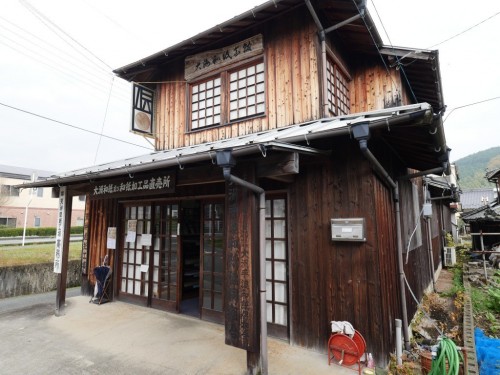
Create Washi Paper at Tenjin Japanese Paper Factory
We were able to observe the different stages of washi paper manufacturing during our visit to the factory where we got to make our own! Once the mulberry bark is harvested, it is cooked to produce long fibers which are beaten and then separated to soften them. This results in a pulp that is mixed with water and nori, a plant substance that swells in water to become a viscous material.
It is with this pulp that we will be able to create our paper. The first step is to sift the pulp mixture through a bamboo sieve. By tilting the seive back and forth, you can gradually create a thin layer of pulp that remains glued to the seive. Then gently remove the sieve from the tray, press a little to extract excess water, peel off your paper and lay the sheet on a hot metal tank heated with steam. After a few minutes of drying, the sheet of paper is ready!
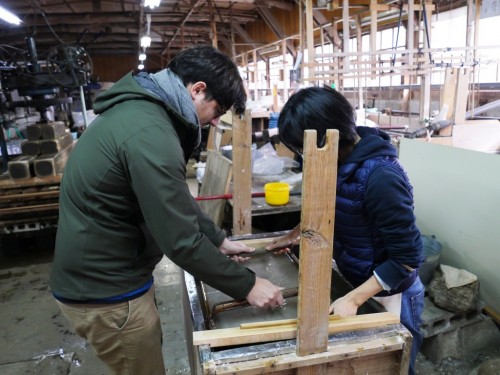
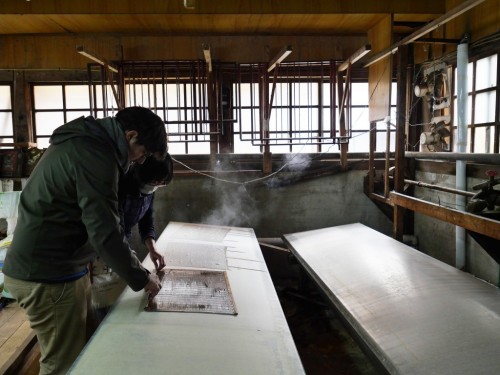
Useful Information :
- Opening hours: every day from 9am to 4:30pm
- Paper workshop price: 500 yen
Gilding on Paper
On the initiative of the Uchiko Chamber of Commerce, Hiroyuki Saito trained with designer Gabor Ulveczki in an effort to develop gilding handicrafts on paper. Today, in the showroom dedicated to gilding, you can find many gilded products including stationery, lamps, wallpaper and more.
Access
Only 40 kilometers southwest of Matsuyama, Uchiko is easily accessible by train via JR Yosan Line. From Matsuyama, you can choose between the express train(25-minute ride) or the local train (55-minute ride). The Omori Candle Shop has located in the historic district just a 10-minute walk from Uchiko Station. It takes 30 minutes to walk from the station to Tenjin Japanese Paper Factory.
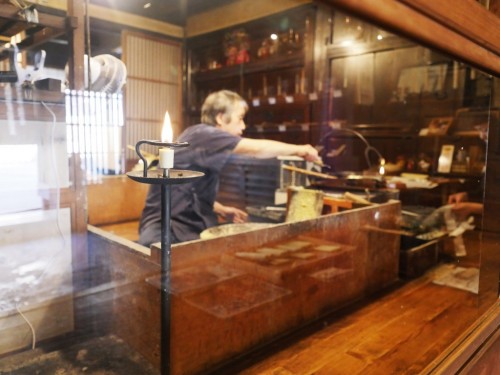
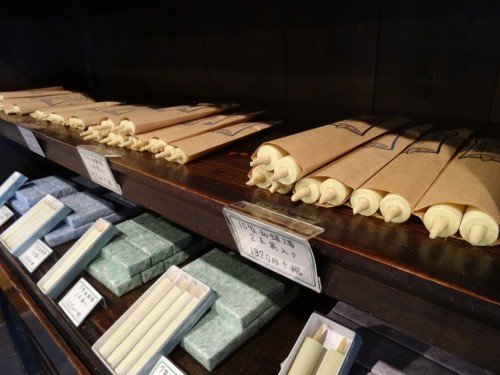
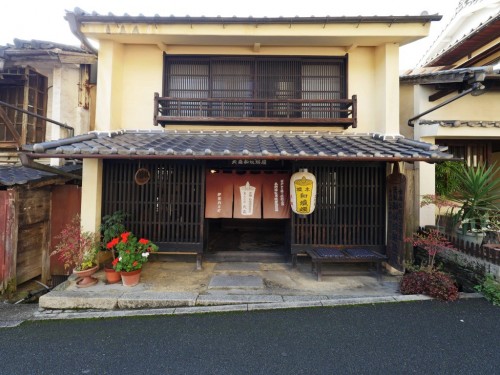
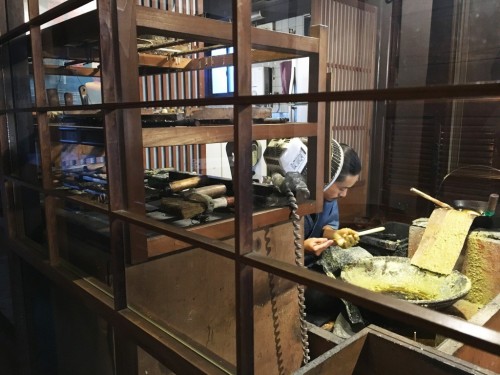
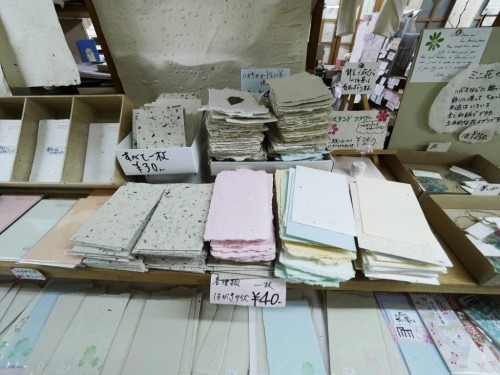
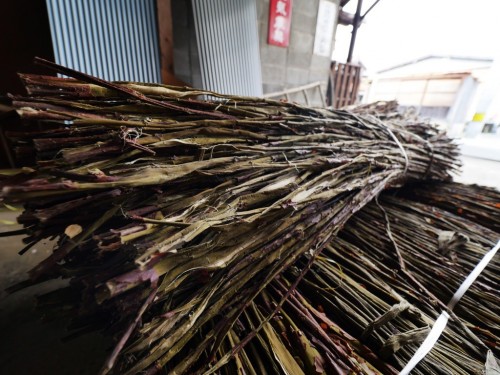
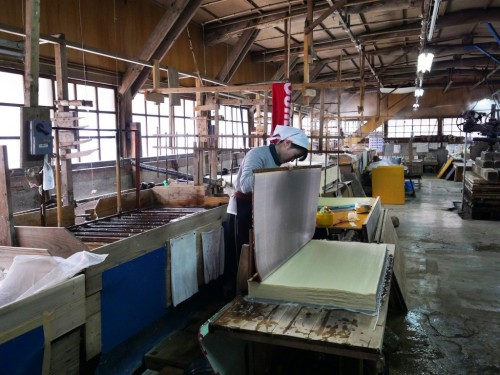
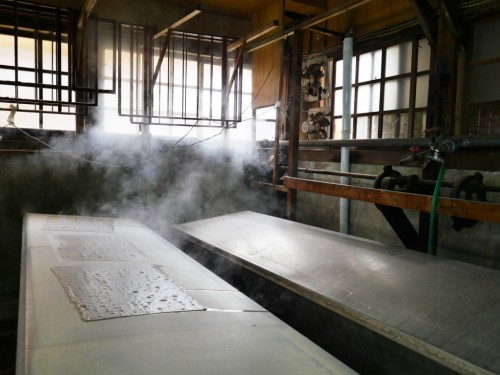
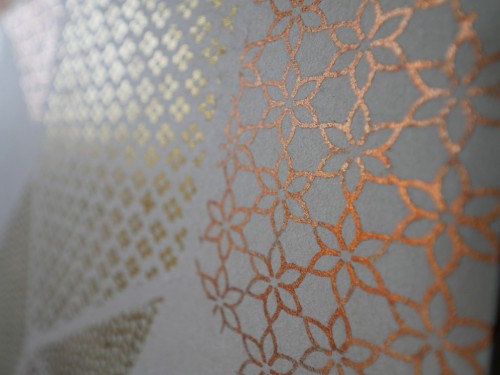



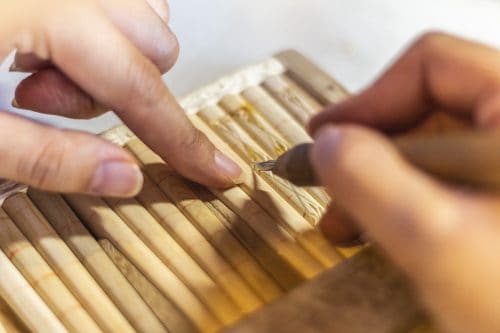
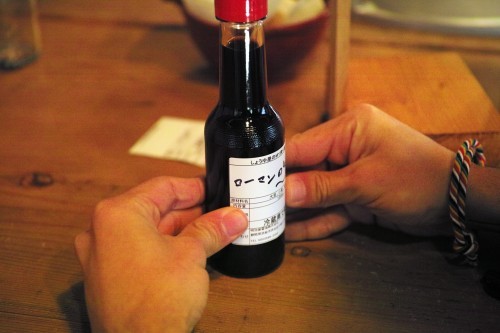
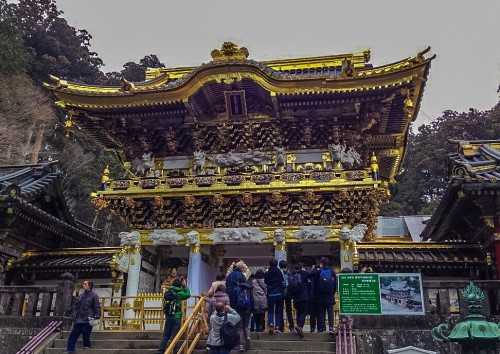


No Comments yet!